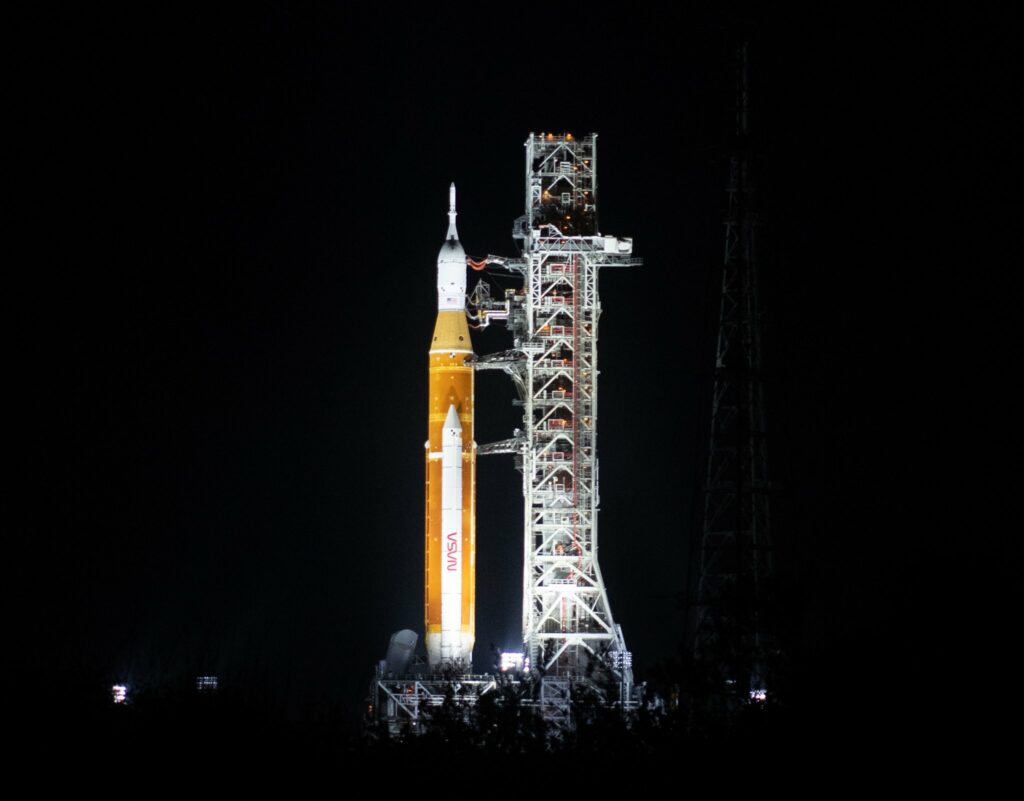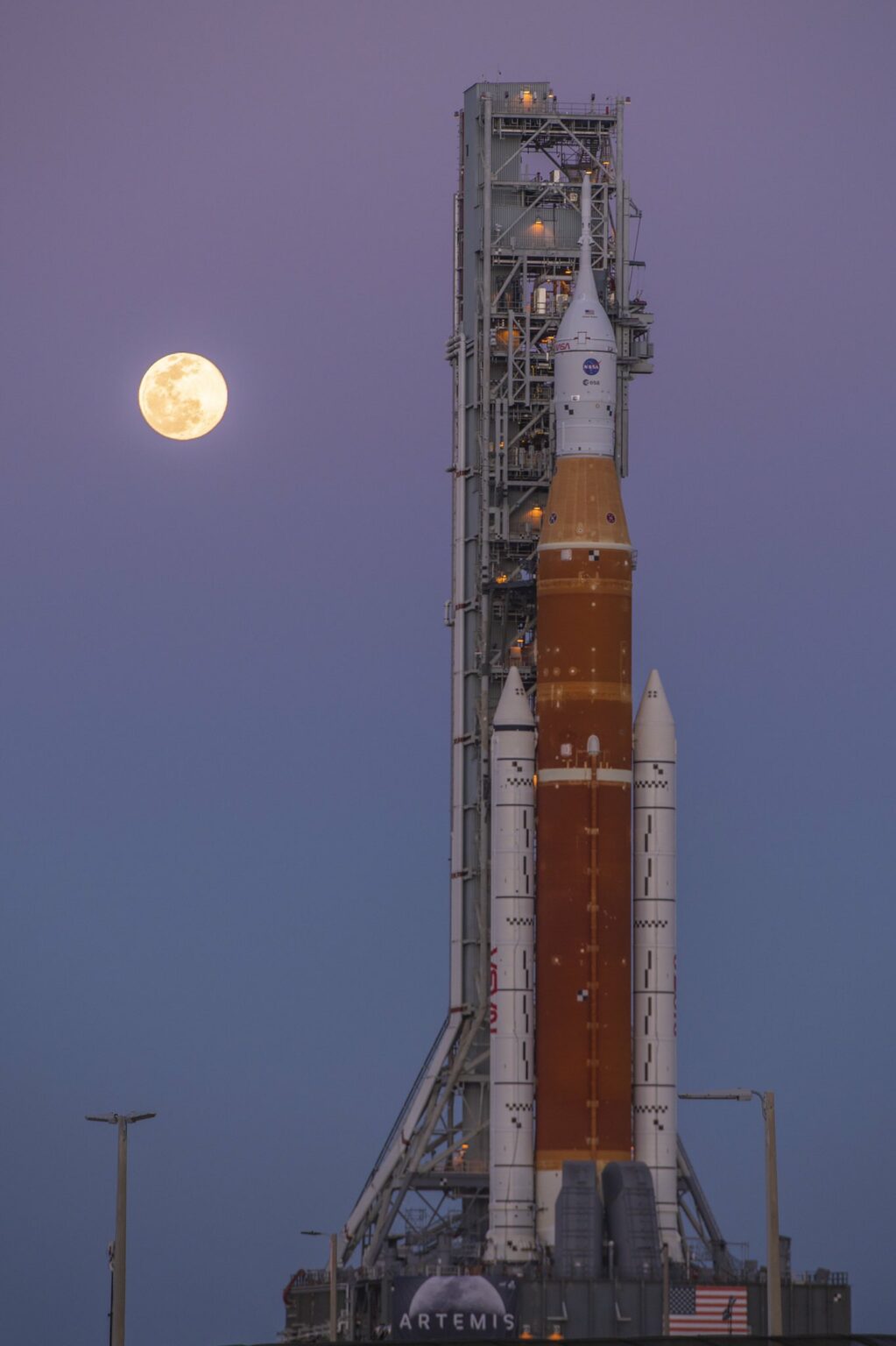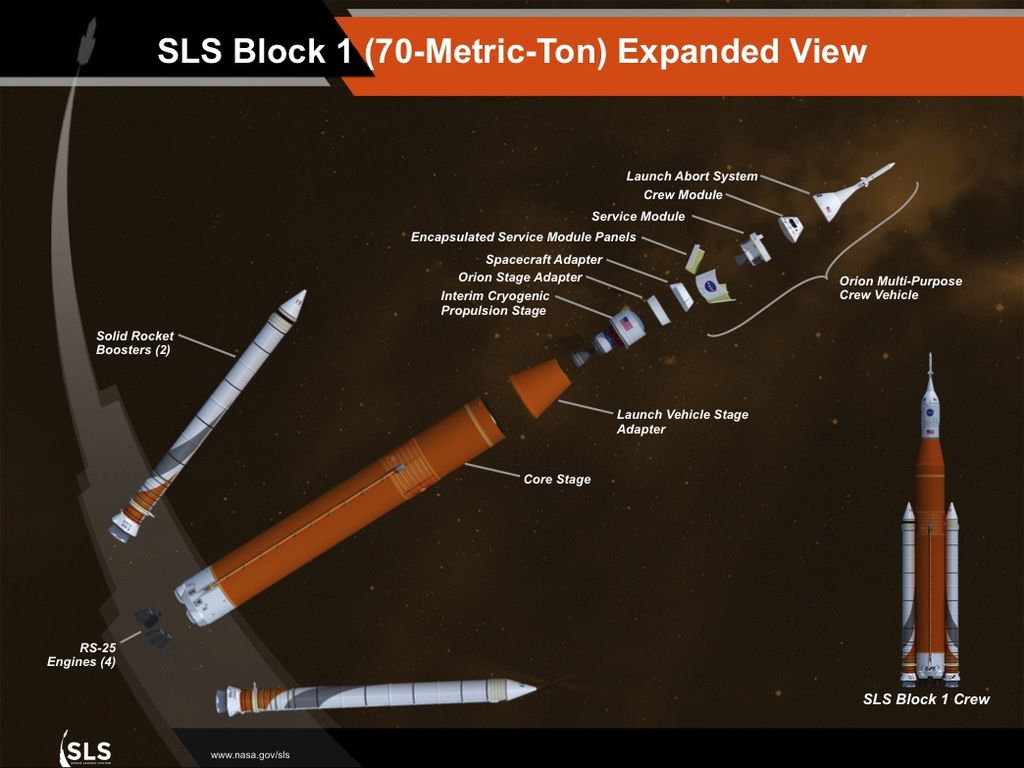Engineers successfully installed a super heavy SLS (Space Launch System) rocket with the Orion spacecraft on the launch pad. This is stated in a post published on the NASA website.

The SLS was placed on the territory of the LC-39B launch complex. It was built in the 1960s for the needs of the Apollo program. From this complex, in particular, the launch of the Apollo 10 mission was carried out. Later, the pad was used for shuttle launches.

In the near future, NASA specialists will hold a full rehearsal for SLS launch. Within its framework, the rocket will be fully refueled, and engineers will work out the pre-launch countdown procedure. After that, the SLS will be returned to the Vertical Assembly Building for final operations to prepare it for launch within the Artemis I mission. Now it is planned for the end of spring — summer of 2022. The nearest ballistic windows for a flight to the Moon will be open between May 7 and 21, June 6 and 16, and June 29 to July 12.
Technical device of the SLS rocket
SLS is the biggest NASA rocket since the Apollo program. Its height is 111 meters. The carrier consists of two solid-fuel boosters and two stages. The boosters are a modified version of the blocks used to launch the shuttles. They differ in the presence of an additional segment.

The first stage of the rocket is equipped with four RS-25 engines, which were also used on shuttles. The second stage is the DCSS cryogenic module (Delta Cryogenic Second Stage), which was used on Delta family rockets.
In the current configuration, the SLS is capable of carrying 95 tons of cargo into low Earth orbit (LEO) and up to 27 tons of cargo to the Moon. In the future, NASA plans to equip the SLS with more powerful boosters and the second stage, which will improve its payload capacity to 130 tons at LEO and up to 46 tons when flying to the Moon.
According to https://blogs.nasa.gov

